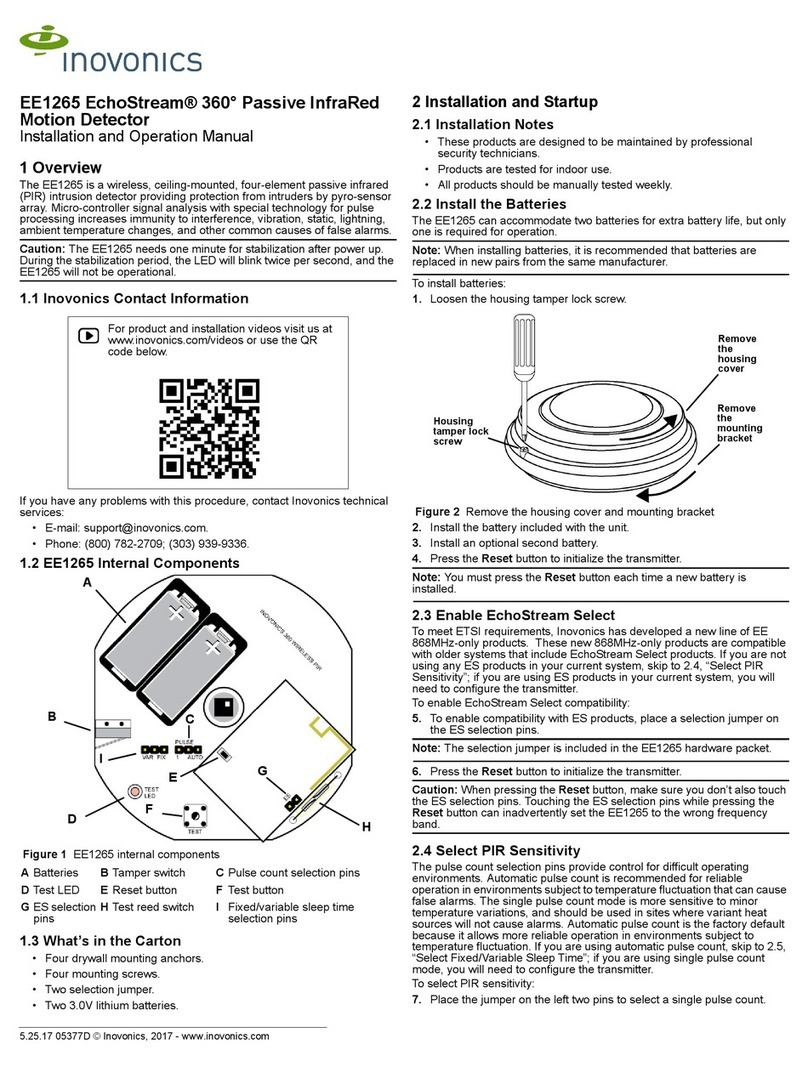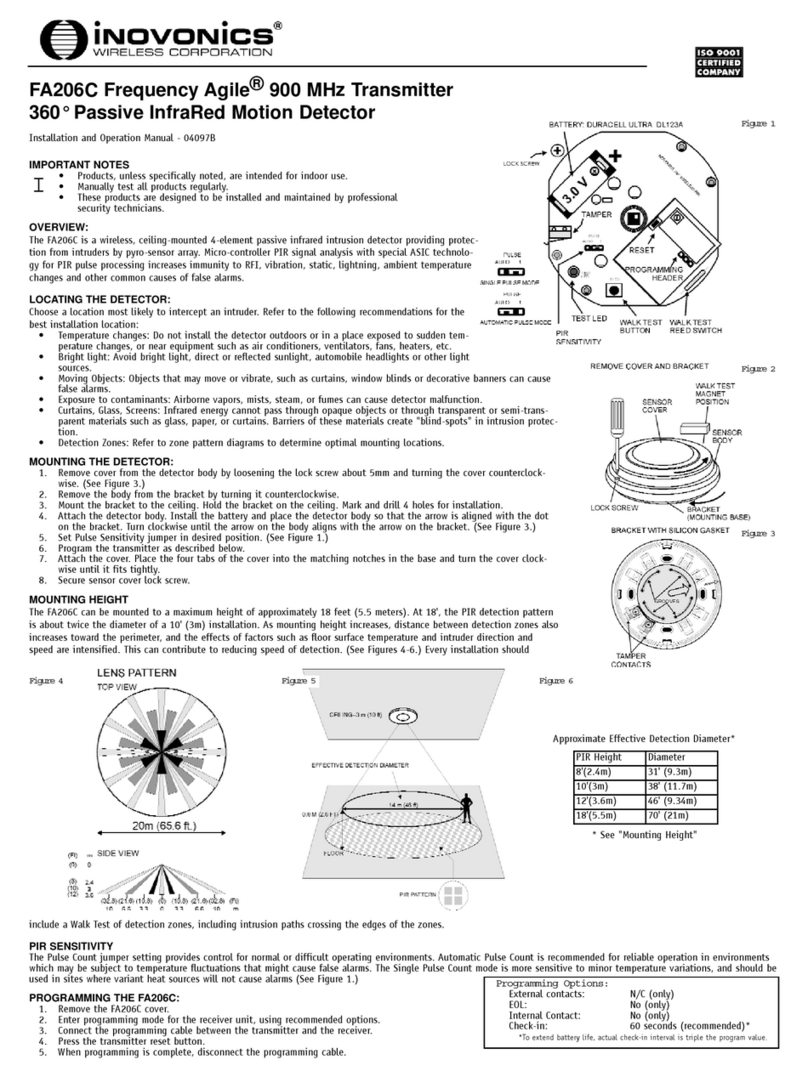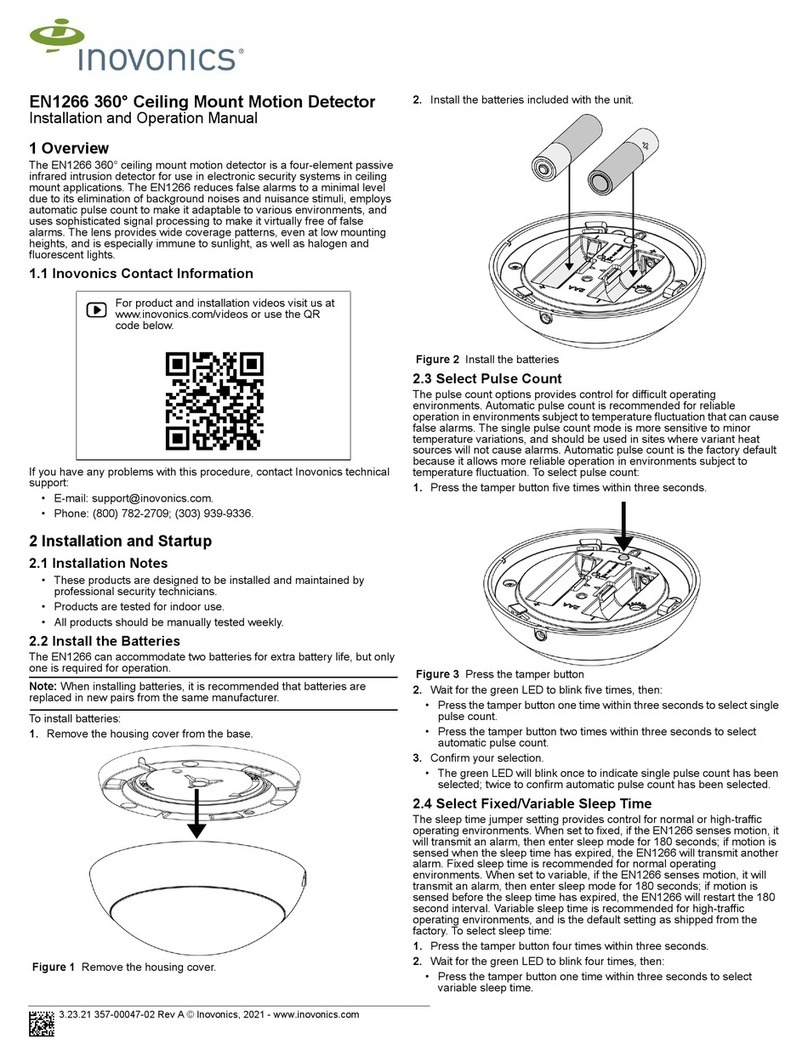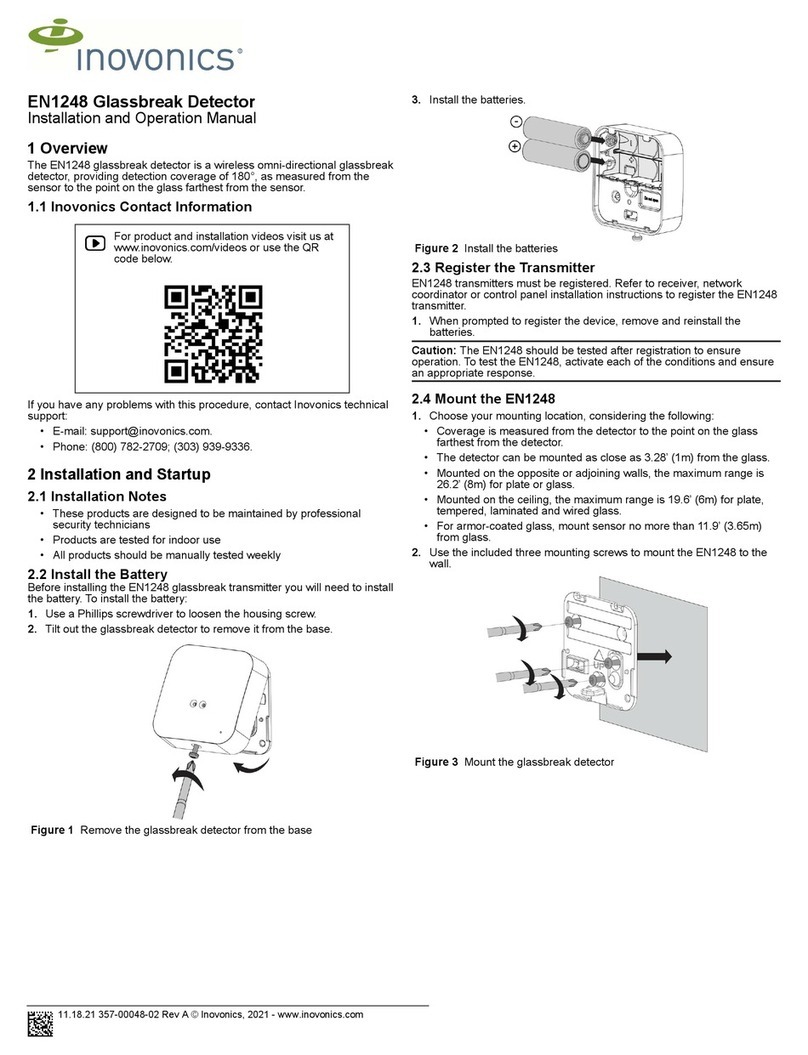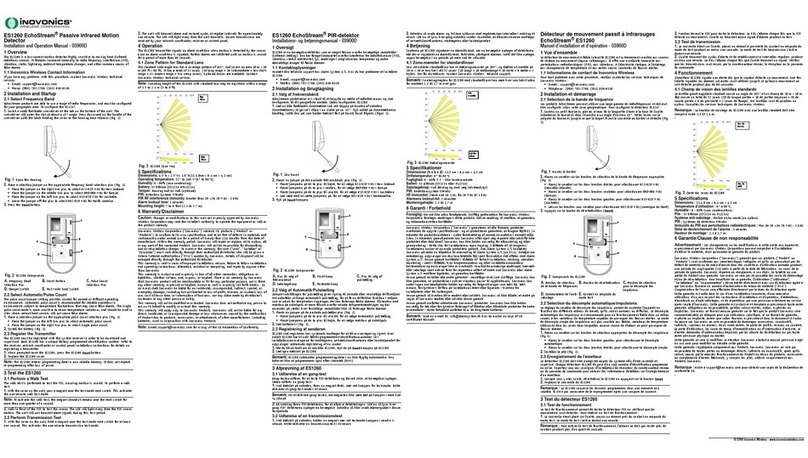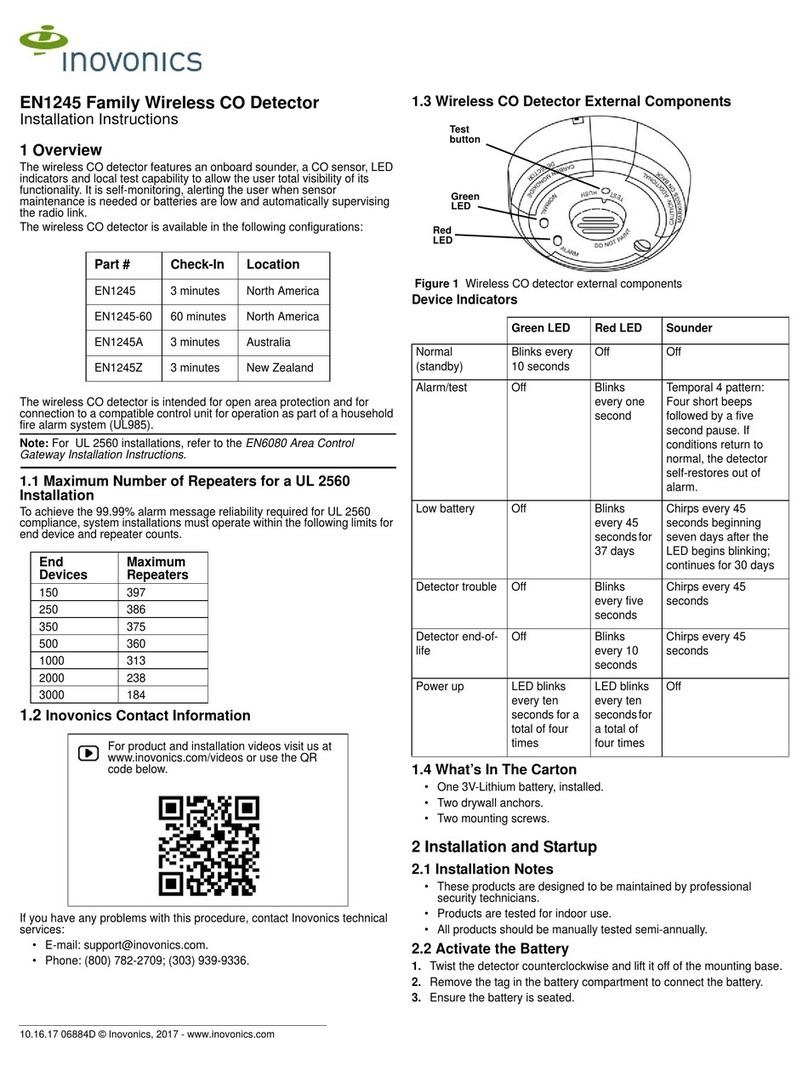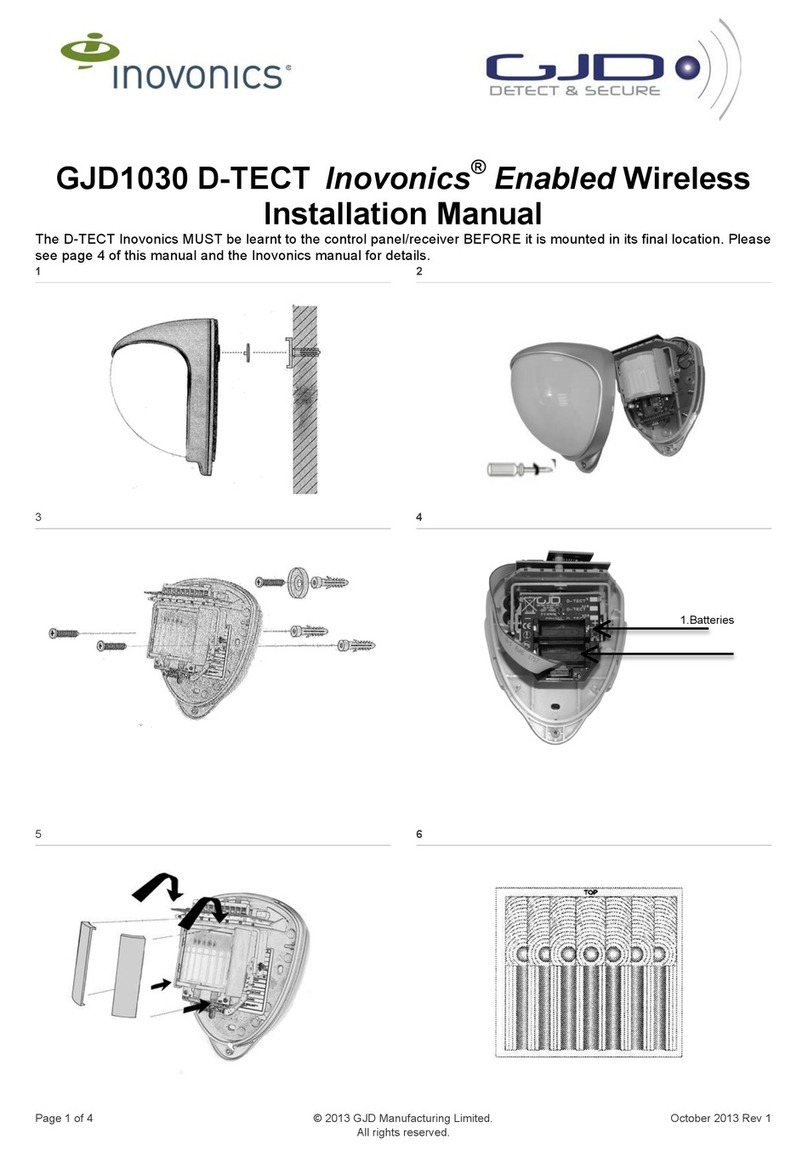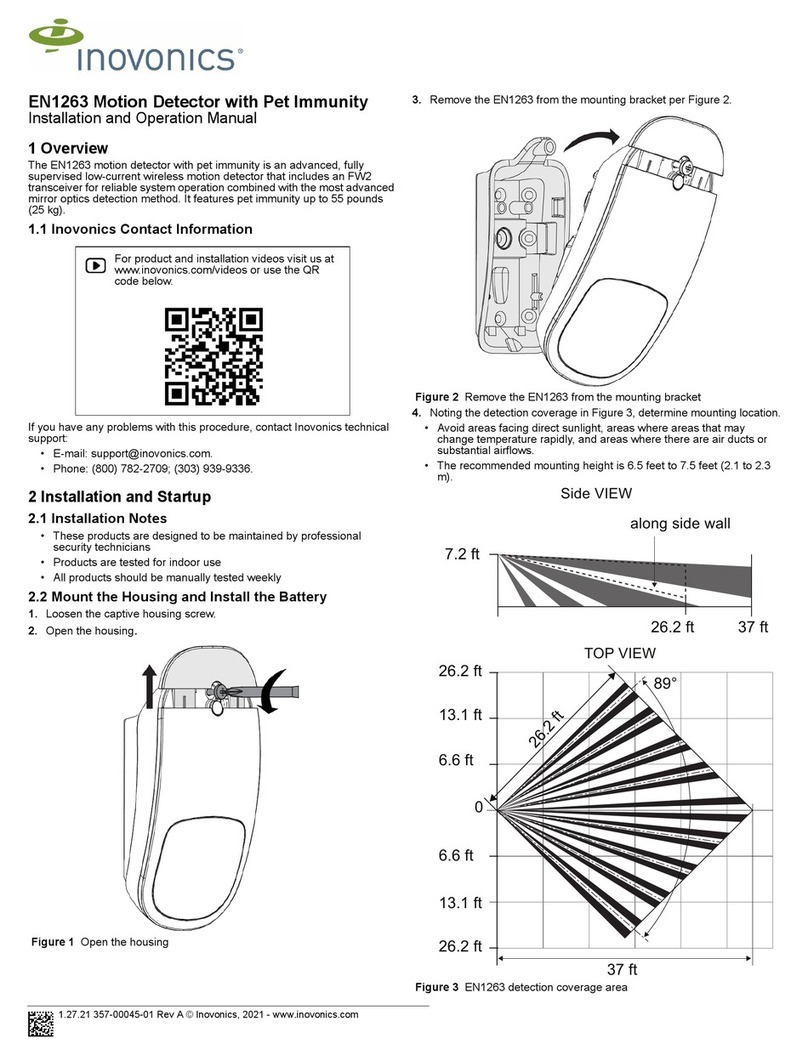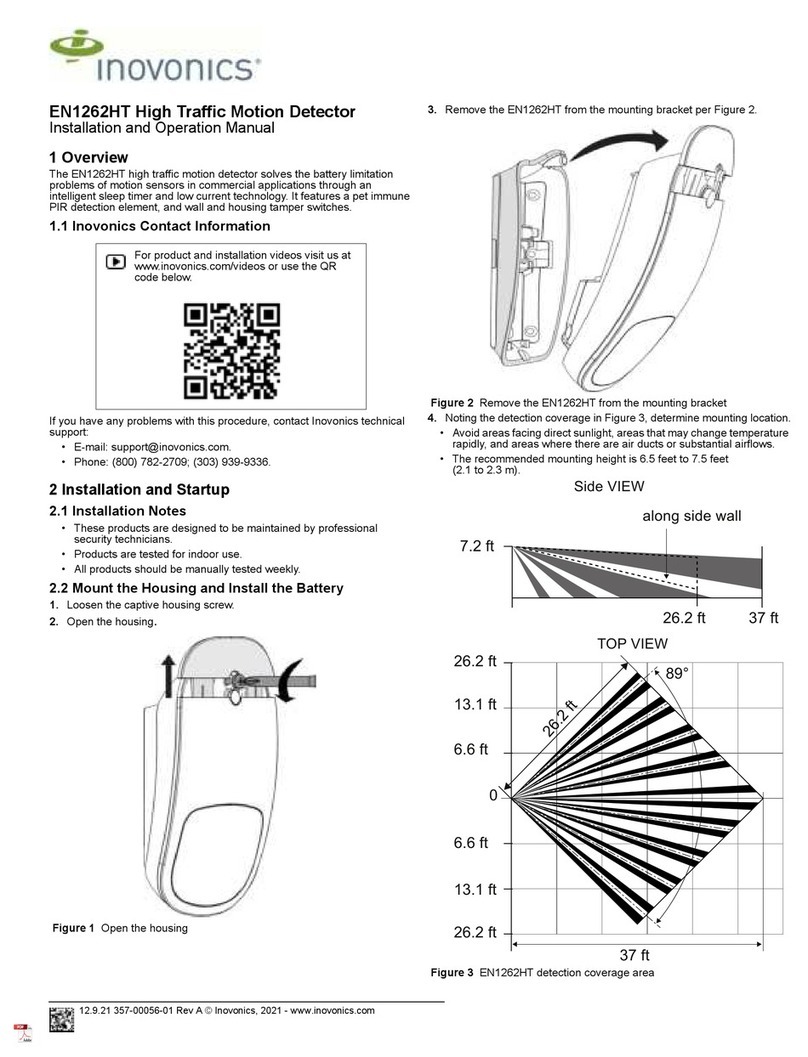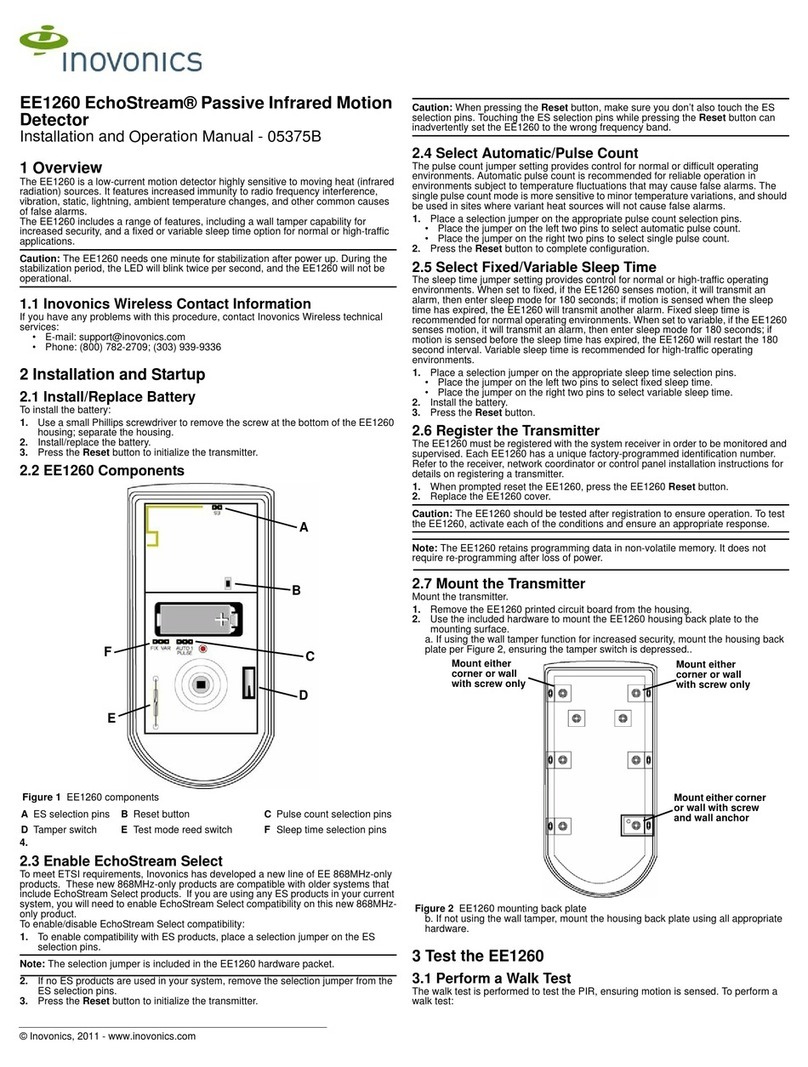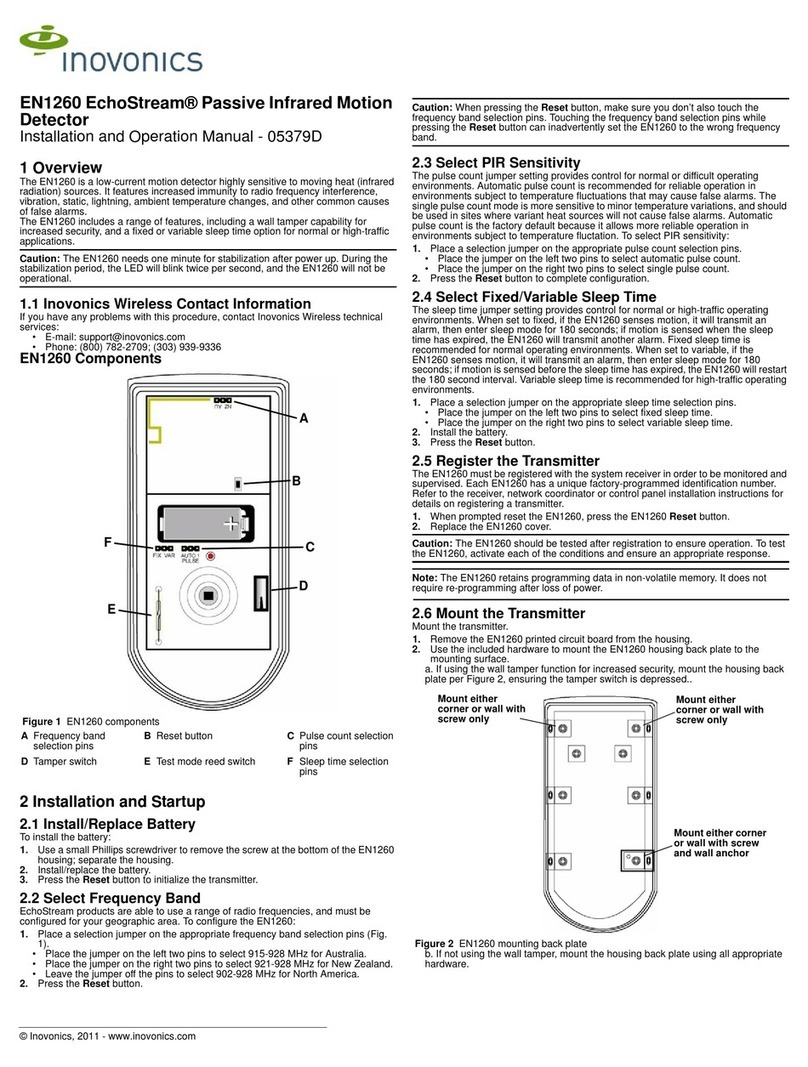
6/15/17 05308F © Inovonics, 2017 - www.inovonics.com P/N 7103855 Rev. C 2
The EE1261 is configured for variable sleep time by default. If you are
planning to use the EE1261 in variable sleep time, skip to section 2.6,
“Select Sleep Duration”; if you are planning to use the EE1261 in fixed
sleep time, you will need to configure it.
To configure the EE1261 for fixed sleep time:
8. Move the selection jumper on the sleep time selection pins to the left
two pins, marked FIX, to select fixed sleep time.
Note: EN50131-2-2; Security Grade 2 requires that the fixed sleep time
option (FIX) be selected.
9. Press the reset button.
2.6 Select Sleep Duration
If the sleep duration is set to maximum, the sleep duration will be 180
seconds. Maximum is the recommended, default setting for most
environments.
If the sleep duration is set to minimum and the sleep time is set to fixed, the
EE1261 will have a sleep time of 15 seconds for the first six transmissions
while motion is still sensed, followed by one extended sleep period of 180
seconds. If the sleep duration is set to minimum and the sleep time is set to
variable, the EE1261 will have a sleep time of 15 seconds.
Caution: EE1261 motion detectors set in the minimum mode will have a
decreased battery life.
The EE1261 is configured for maximum sleep duration by default. If you
are planning to use the EE1261 set for maximum sleep duration, skip to
section 2.7, “Using Sleep Time and Sleep Duration”; if you are planning to
use the EE1261 set for minimum sleep duration, you will need to configure
it.
To configure the EE1261 for minimum sleep duration:
10. Move the selection jumper on sleep duration selection pins to the right
two pins, marked MIN, to select a minimum sleep duration.
11. Press the reset button.
2.7 Using Sleep Time and Sleep Duration
Maximizing battery life
To prolong battery life of the EE1261, select MAX on the sleep duration
pins, and VAR on the sleep time selection pins. With the variable sleep
timer active and the sleep duration set to maximum, the detector first sends
an alarm and then sleeps for 180 seconds. If the detector sees movement
during this time, it restarts the sleep timer and doesn’t send an alarm. This
mode is recommended for high traffic environments with frequent activity
during disarmed periods.
Increasing catch rate (and UK DD243 installations)
To maintain optimum detection immediately following system arming, select
MIN on the sleep duration pins, and FIX on the sleep time selection pins.
When the detector sees motion it goes to sleep for 15 seconds. If the
detector sees movement during this time, and is still active, it sends a new
activation at the end of the 15 second window. The detector continues to do
this for five more cycles. After six consecutive cycles, the detector goes to
sleep for an extended 180 second period to conserve batteries. This mode
may be used for DD243 installations in the UK. Battery life may be
significantly shortened by use of this setting.
2.8 Adjust sensitivity
The sensitivity of the motion detector can be adjusted to fit your specific
application, as needed. To adjust sensitivity:
12. Use a Phillips head screwdriver to turn the sensitivity adjustment dial.
• Turn the dial to the left, towards the minus sign, to decrease the
motion detector’s sensitivity.
• Turn the dial to the right, towards the plus sign, to increase the motion
detector’s sensitivity.
Note: Only the mid to high setting of the sensitivity adjustment dial is EN
50131-2-2 compliant.
13. Press the reset button.
2.9 Register the Transmitter
The EE1261 must be registered with the system receiver in order to be
monitored and supervised. Each EE1261 has a unique factory-
programmed identification number. Refer to the receiver, network
coordinator or control panel installation instructions for details on
registering a transmitter.
14. When prompted, press the reset button.
Caution: The EE1261 should be tested after registration to ensure
operation. To test the EE1261, activate each of the conditions and ensure
an appropriate response.
Caution: When pressing the reset button, make sure you don’t also touch
the EchoStream Select pins. Touching the EchoStream Select pins while
pressing the reset button can inadvertently set the EE1261 to the wrong
frequency band.
Note: The EE1261 retains programming data in non-volatile memory. It
does not require re-programming after loss of power.
2.10 Mount the Transmitter
Mount the transmitter.
15. Loosen the pcb mounting screw enough to slide the board back over
the keyhole slot.
16. Lift and remove the EE1261 pcb from the housing.
17. Use the included hardware to mount the EE1261 housing back plate to
the mounting surface.
• If using the wall tamper function for increased security, mount the
housing back plate per Figure 3, ensuring the tamper switch is
depressed.
Figure 3 EE1261 mounting back plate
• If not using the wall tamper, mount the housing back plate using all
appropriate hardware.
18. Replace the pcb and slide it into position so that the pcb mounting
screw is holding the board in place.
19. Tighten the pcb mounting screw.
20. Replace the EE1261 cover.
21. Replace the housing screw.
3 Optional Brackets
Optional wall and ceiling mount brackets, Inovonics part number ACC665,
are available. The wall and ceiling mount brackets must not be used for
graded applications.
Figure 4 Ceiling and wall mount brackets
To mount a ceiling or wall bracket:
Mount to either
the corner or wall
with screw only.
Mount to either
the corner or wall
with screw and
wall anchor.
Mount to either
the corner or
wall with screw
only.
Ensure foam
tamper insert is
not deformed
or damaged.
Ceiling mount
installation Wall mount
installation
